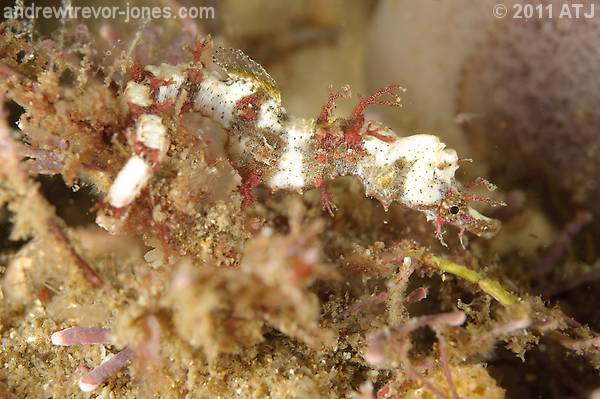
The Sydney pygmy pipehorse, I. lumnitzeri, George found at Oak Park in April 2011.
Original: Wednesday 25 June 2014 Update: Monday 31 August 2015
Pygmy pipehorses are a group of small syngnathids (fish family Syngnathidae) that look like a cross between seahorses and pipefish. They tend to orient themselves horizontally like pipefish but they are not as elongated as pipefish and have a more seahorse look to them, especially around the head. There are 11 species of pygmy pipehorses globally with four species found in Australia of which one, Sydney's pygmy pipehorse, Idiotropiscis lumnitzeri, is found from Sydney south to Jervis Bay.
Sydney's pygmy pipehorses are quite small reaching a total length of 55 mm with their tail unfurled. They display a wide variation in colouration, from a green-brown (almost the same colour as the algae the live around), through red and white. They have a special outer skin which encourages the growth of algae from where they live (Kuiter, 2009). The algae grows in certain areas of the skin and somehow the colouration is passed on through the crustaceans the pipehorses eat; the crustaceans having eaten the algae from the area, so that the algae on the pipehorses matches the algae on the substrate (Kuiter, 2009). While they are generally well camouflaged, the white individuals tend to be a bit easier to spot but as they are small you have to look very closely for them.
I saw my first Sydney pygmy pipehorse as Oak Park, Cronulla, on a night dive in April 2011. It was pointed out to me by my dive buddy, George. This was a white one and once pointed out it was quite easy to see.

The Sydney pygmy pipehorse, I. lumnitzeri, George found at Oak Park in April 2011.
I didn't see another one until January 2013 when my dive buddy, Sheree, found two at Bare Island on the north western corner. These two were smaller than the one at Oak Park and much better camouflaged. I was surprised she even found them. While photographing one of them I noticed a third one attached to the same piece of alga. We have since gone back to the same location a number of times but have not been able to find them again.
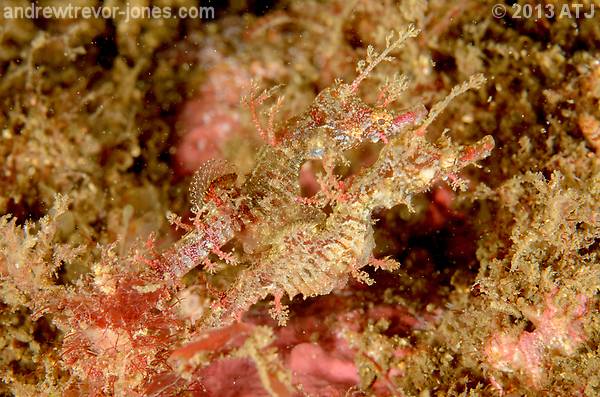
The two Sydney pygmy pipehorses, I. lumnitzeri, Sheree and I found at Bare Island in January 2013.
In November 2013, another dive buddy, Nick, pointed out two pygmy pipehorses on the same rock on the eastern side of Bare Island. I was able to find one of these on a dive three weeks later but it was gone the next time I dived that site.
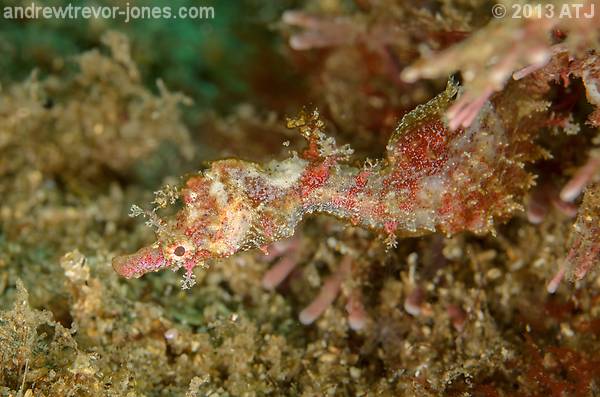
One of two Sydney pygmy pipehorses, I. lumnitzeri, Nick pointed out to me at Bare Island in November 2013.

The other Sydney pygmy pipehorses, I. lumnitzeri, Nick pointed out to me at Bare Island in November 2013.
We'd heard that pygmy pipehorses had been found at Kurnell but I had never seen any myself until December 2013. I had been told that one was recently seen at a certain location and so the next time I dived at Kurnell I checked that location and found a large white one. I saw it again it January 2014.

The Sydney pygmy pipehorse, I. lumnitzeri, I found at Kurnell in December 2013.
In February 2014, Sheree found a tiny juvenile at The Monument. This pipehorse was so small and so well camouflaged, I still don't know how she found it. She's looked for it again but was not able to find it.
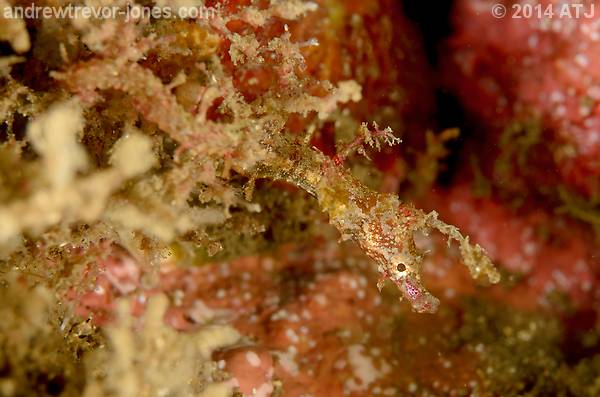
The tiny juvenile Sydney pygmy pipehorse, I. lumnitzeri, Sheree found at The Monument in February 2014.
In March 2014, Sheree did it again and found two pygmy pipehorses near The Steps. These were quite big, one was a pregnant male and I suspect the other was a female. We saw these same two a number of times over the next month and then they disappeared.

The pregnant male Sydney pygmy pipehorse, I. lumnitzeri, Sheree found near The Steps in March 2014.
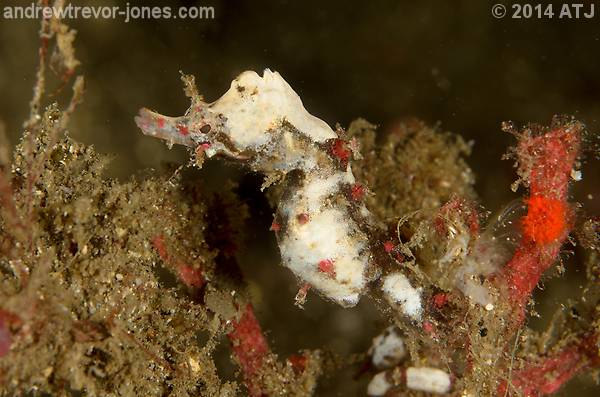
The other Sydney pygmy pipehorse, I. lumnitzeri, Sheree found near The Steps in March 2014. I think this might be a female.
Like seahorses, male pygmy pipehorses have the responsibility for carrying the eggs. The female lays unfertilised eggs in a pouch of the male. He fertilises the eggs and carries them until they are ready to hatch.
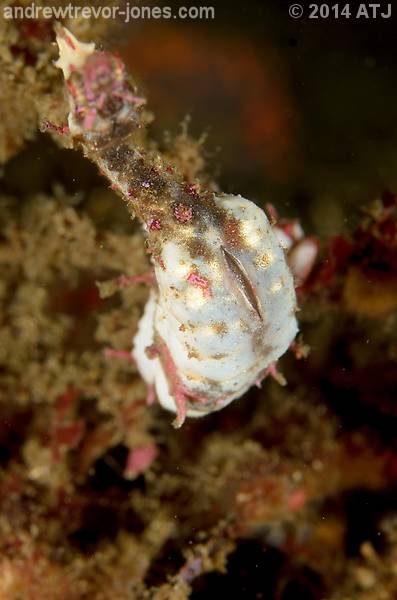
The pregnant male Sydney pygmy pipehorse, I. lumnitzeri, Sheree found near The Steps in March 2014, showing a full pouch.
Friends Noel and Di pointed out another pygmy pipehorse at The Steps in April 2014 and I realised there was a second one there the next time I dived the area. I watched these two over a number of weeks and one was still there in June 2014.
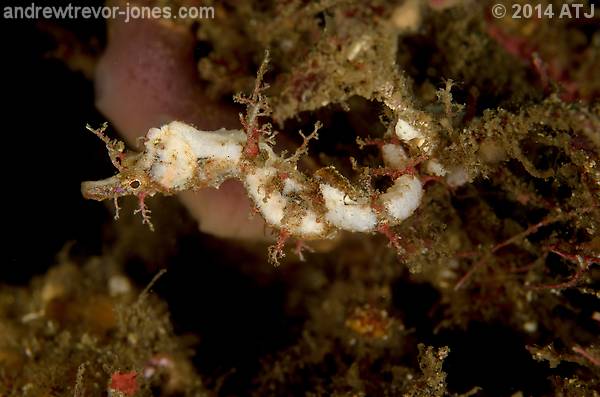
One of the Sydney pygmy pipehorses, I. lumnitzeri, Di pointed out to me at Kurnell in April 2014.

The other Sydney pygmy pipehorses, I. lumnitzeri, Di pointed out to me at Kurnell in April 2014.
I am still yet to see a red one which look quite striking. I think they will be more difficult to find but I am still hopeful of finding one at some point.
Since posting this blog entry in June 2014, I have seen two more Sydney pygmy pipehorses. Both were at The Leap, Kurnell in October, 2014. The first was a white one, spotted by my dive buddy, Sheree, on 5 October. The second one I found - the first pygmy pipehorse I have found myself - not very far away from white one and I found it on 26 October. This second one is pink. The first pink one I have ever seen.
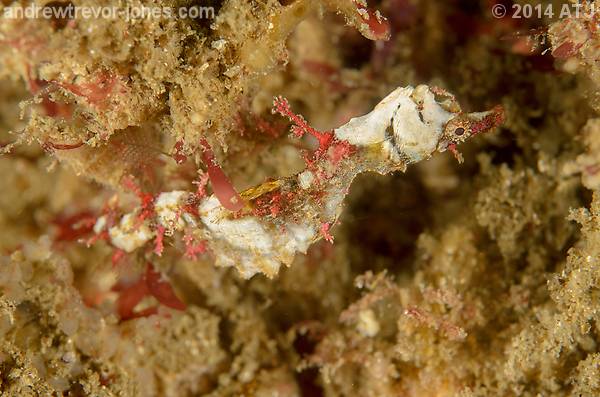
The white Sydney pygmy pipehorses, I. lumnitzeri, Sheree found on 5 October 2014.
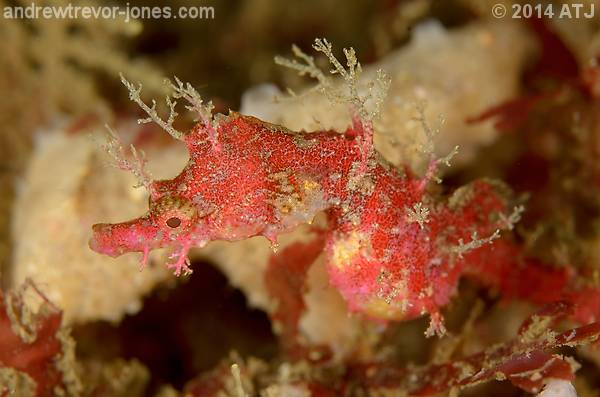
The pink Sydney pygmy pipehorses, I. lumnitzeri, I found on 26 October 2014.
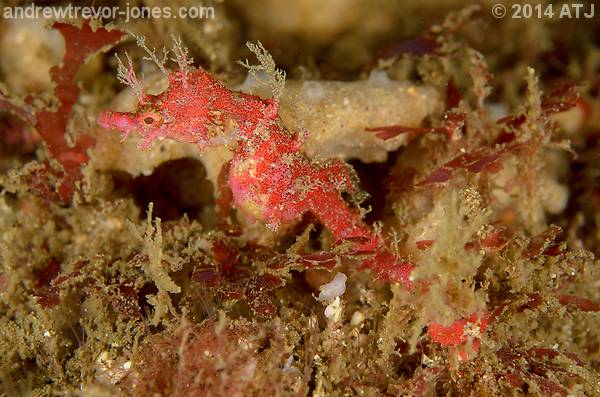
The pink Sydney pygmy pipehorses, I. lumnitzeri, I found on 26 October 2014.
Since the last update to this post on October 2014, I have seen 4 more Sydney pygmy pipehorses at Kurnell and 4 at Bare Island, La Perouse. I found each of the four at The Leap: a tiny pink one on 16 November at the end of the wall, another pink one on 6 December just past the white one, a tiny pink one on 15 December right next to the white one, and then a reddish one on 1 January 2015 also right next to the white one. I have also seen the white one first spotted by my buddy on 5 October on every dive at The Leap since and I saw the pink one I found on 26 October on every dive until 7 December and it has not been since.

The pink Sydney pygmy pipehorses, I. lumnitzeri, I found on 16 November 2014.
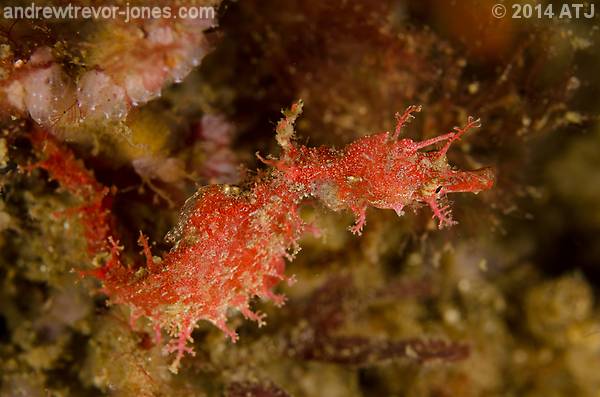
The pink Sydney pygmy pipehorses, I. lumnitzeri, I found on 6 December 2014.
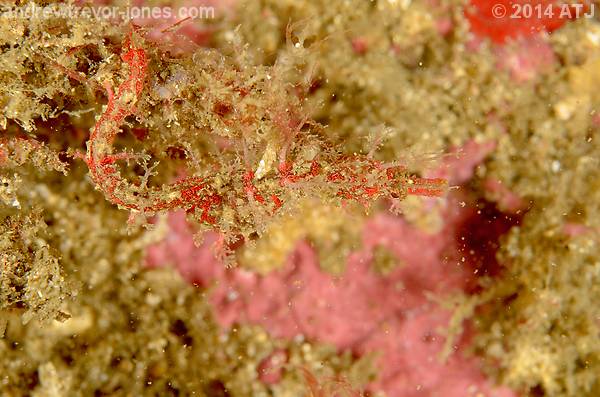
The pink Sydney pygmy pipehorses, I. lumnitzeri, I found on 15 December 2014.
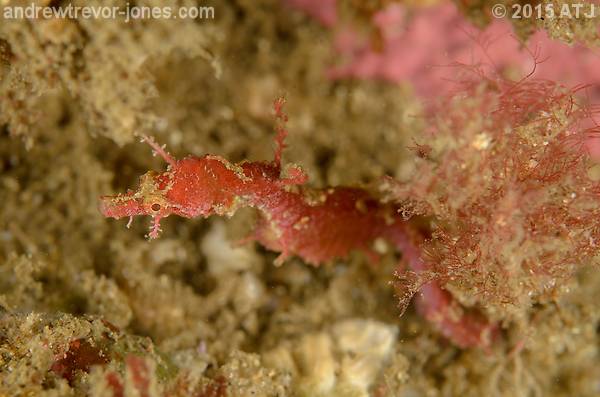
The reddish Sydney pygmy pipehorses, I. lumnitzeri, I found on 1 January 2015.
The four I saw at Bare Island were all on the same rock on 3 January 2015. The rock and one of the pygmy pipehorses was pointed out to me by a fellow diver, Vicki and then I managed to find another 3 on the same rock. Vicki and her friend Kim have seen as many as 6 on this one rock on a single dive.

A pregnant male Sydney pygmy pipehorses, I. lumnitzeri, Vicki pointed out to me on 3 January 2015.
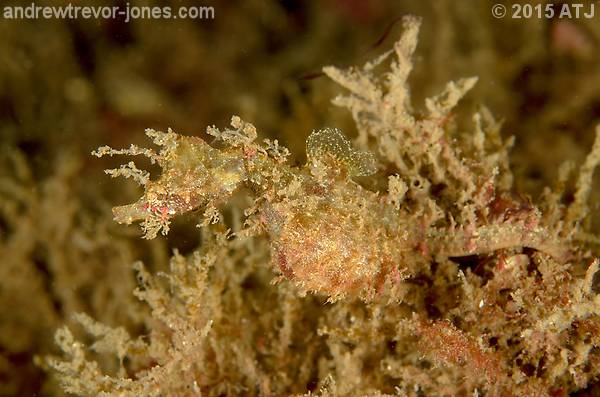
A pregnant male Sydney pygmy pipehorses, I. lumnitzeri, I found on 3 January 2015.
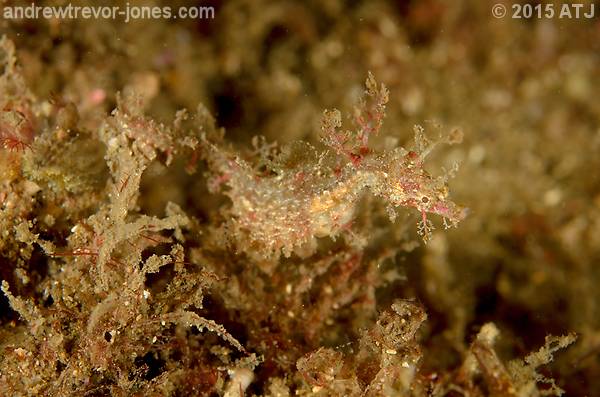
A Sydney pygmy pipehorses, I. lumnitzeri, I found on 3 January 2015.
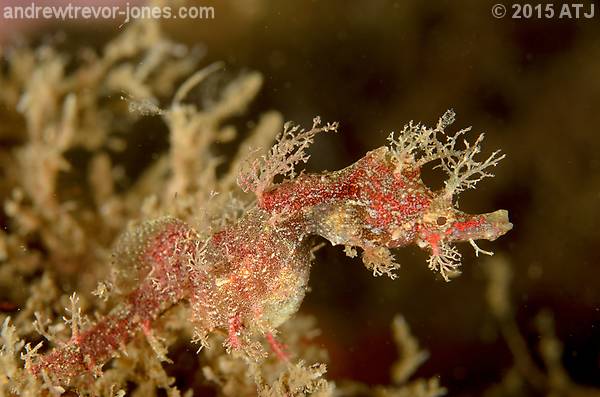
A pregnant male Sydney pygmy pipehorses, I. lumnitzeri, I found on 3 January 2015.
2015 has been a good year for me for finding Sydney pygmy pipehorses. I have seen pygmy pipehorses on almost every dive I have done at The Leap and Bare Island in 2015. I think this is partly because I have become better at spotting them but mostly because I have been actively looking for them. Additionally, they appear to stay in the same location for weeks to months and so once found, they can be spotted over and over again at that location. Note that it may take multiple minutes to find a pygmy pipehorse even in a known location because their camouflage can be so good.
At The Leap I have seen around 15 individuals in 2015. I'm still working out the count for Bare Island but it is already over 30. We lost a lot after the super storm hit Sydney in April but they have been slowly reappearing and we now have some adults around.
I have created a blog entry to highlight the Pygmy Pipehorse Sightings at Kurnell which I can update regularly to show both new and old individuals. I am working on a similar one for Bare Island.
Kuiter R.H. 2009. Seahorses And Their Relatives. Aquatic Photographics, Seaford. 334pp.
Please leave Feedback if you have any comments or questions about this blog entry.